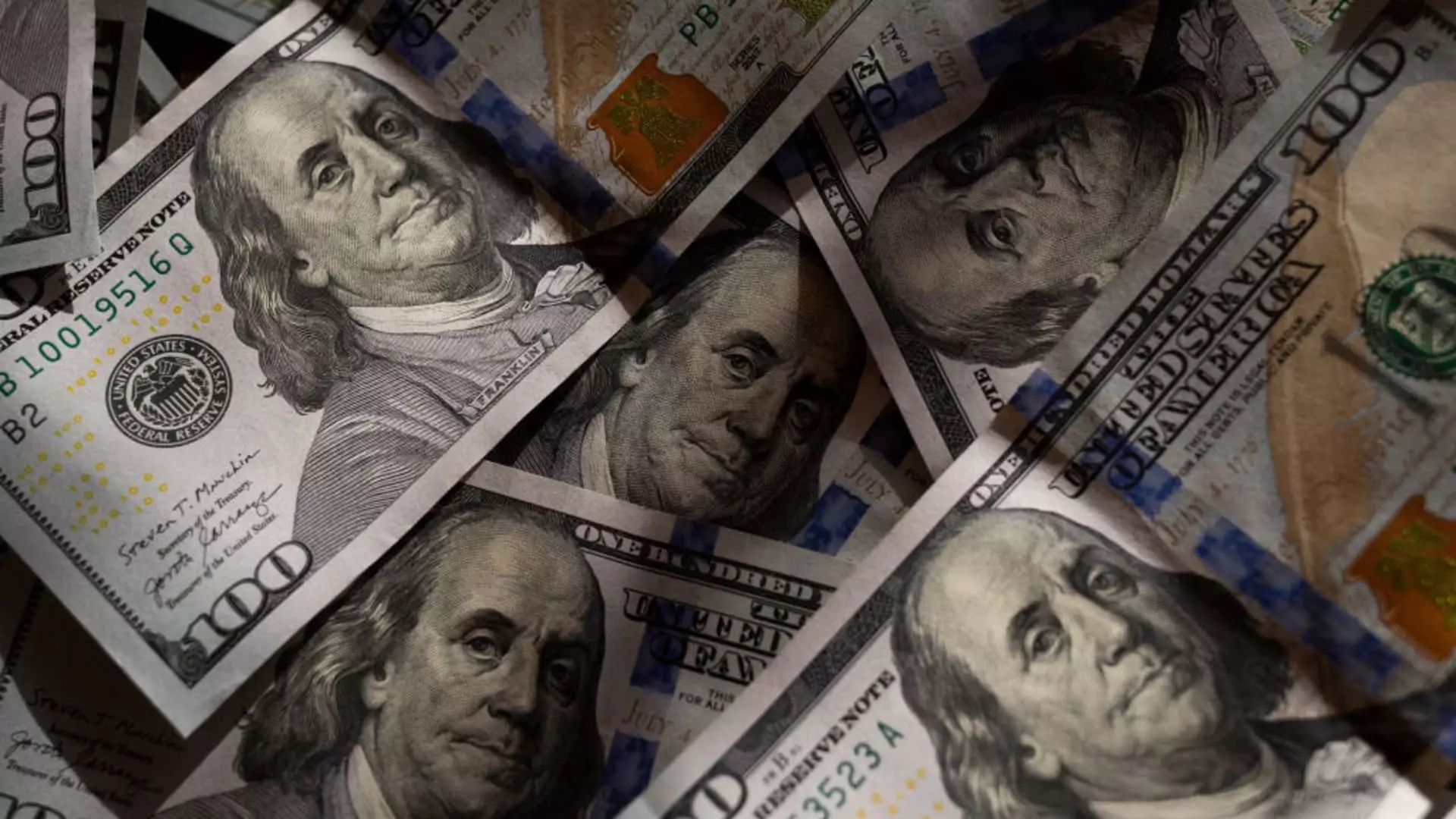The once-mighty U.S. dollar is experiencing a significant decline, prompting a wave of analysis and concern among economists, investors, and policymakers alike. Over the course of just one year, the dollar index has weakened by a staggering 9%, leading many analysts to predict further depreciation in the months ahead. This anticipated decline may seem to some like a blessing, but the reality is far more complex. The fluctuations of the dollar, often dubbed the world’s reserve currency, have far-reaching implications not only for the U.S. economy but for almost every country that conducts international trade.
Central banks around the globe are caught in a precarious position. While a weaker dollar might ease some economic pressures—particularly for nations burdened by dollar-denominated debt—it also comes with risks. The presence of rising imported inflation could negate any advantages gained from a depreciating currency. In this light, the dollar’s decline is a double-edged sword, posing a balance of benefits and headaches that central banks must navigate carefully.
Investor Sentiment: A Crisis of Confidence
The most recent Global Fund Manager Survey from Bank of America paints a grim picture, revealing that 61% of institutional investors foresee a continued drop in the dollar’s value. Such pessimism has not been witnessed among major investors in two decades, and it indicates a troubling crisis of confidence in the U.S. economic landscape. This atmosphere of uncertainty has led to an exodus from U.S. assets, fuelling concerns that the dollar’s decline is symptomatic of deeper issues within the American financial system itself.
This sentiment extends beyond the borders of the U.S. The weakening of the dollar elicits different reactions globally. For safe-haven currencies, such as the Japanese yen and the Swiss franc, it has resulted in notable appreciation. Both currencies have strengthened over 10% against the greenback, illustrating a flight to safety among investors. Yet, as some currencies gain strength, emerging markets find themselves in precarious situations, struggling against the tide while attempting to stabilize their own economies.
Emerging Markets in Turmoil
Conversely, the fallout from the dollar’s decline is not uniform. Emerging market currencies like the Vietnamese dong, Indonesian rupiah, and Turkish lira have plummeted to concerning lows against the dollar. These nations grapple with an unfortunate confluence of high inflation and queues of debt—especially when that debt is dollar-denominated. This places substantial burdens on their economies, making even minor currency fluctuations perilous.
Countries that are already strained by financial instability now must decide between allowing their currencies to float or engaging in active devaluation to stabilize their economies. The ramifications are severe: a devaluation might alleviate debt burdens but could also spark further inflation and trigger capital outflows. Policymakers in these countries are keenly aware that even a whiff of deregulation in currency markets might provoke the wrath of the U.S., potentially inviting more tariffs or trade barriers.
A Balancing Act for Central Banks
As central banks across the globe reassess their strategies in light of a declining dollar, the task at hand is nothing short of a high-wire act. Most would welcome a drop of 10%-20% in the U.S. dollar but recognize that the consequences are far from straightforward. According to Adam Button, chief currency analyst at ForexLive, a softer dollar does create an opportunity for central banks to cut rates, thereby stimulating growth. Yet, the potential pitfalls are apparent, especially for nations with precarious fiscal policies and high exposure to foreign debt.
Moreover, rising autarky sentiments in international trade call for a reevaluation of traditional economic relationships. Renewed tariffs by the U.S. could further complicate the global landscape, restricting market access for exporters from emerging economies. As countries like South Korea and India review their interest rate policies to stabilize their currencies, they must also consider the blowback from any changes, including the risk of capital flight or reputational harm from perceived currency manipulation.
The Need for Strategic Negotiations
Amid this economic turbulence, the pressing need for strategic negotiations among nations becomes abundantly clear. Not only do trade agreements offer a venue for stability, but they may also lead to decreased tariffs and foster an environment conducive to positive currency alignment. Countries must work together to address imminent trade tensions and devise measures that deter nations from engaging in destructive devaluation strategies.
In an increasingly interconnected world, the responses of central banks will no longer be dictated solely by national interests but by the nuanced dynamics of the global economy. The potential for currency wars looms large, and the implications of any aggressive devaluation could send ripples across the international financial landscape. Hence, while the current weakening of the U.S. dollar may seem like an opportunity for some markets, for many others, it represents a time of necessary caution and strategic foresight.

Leave a Reply